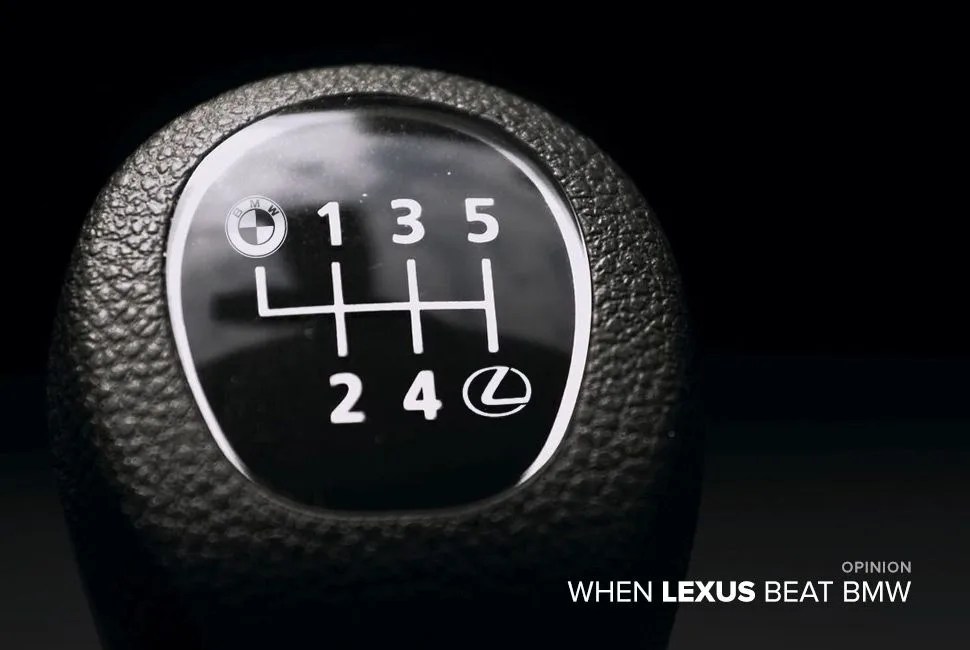How many times have you pined for a gleaming BMW (with required Sport Package, of course) as it quickly and precisely tears past your fairly respectable family sedan? After flipping it the bird, partly out of anger and mostly out of envy, you know in your heart of hearts that you want one. The Ultimate Driving Machine. It’s not just you and your BMW ad that say so. Across countless comparos, the iconic 3-Series has been the ruler of all; when you hear the words “sports sedan”, the BMW 3-Series really is the first car that comes to mind. They’re first and foremost drivers’ cars. Silky smooth inline-six engines, great suspension, wicked good brakes and carefully calculated front-to-rear weight ratios all go into the delicious recipe. Am I biased? Hell, I own a BMW 3-Series that’s several years older than my daughter, so yes, I am. But here’s the truth, without spin: I still love tearing up the neighborhood on my spirited trip to the grocery store to get baby wipes. It’s a fantastic car, hands down.

And then there’s Lexus, what amounts to the staple ride of middle-aged women everywhere. Great cars, for sure, and they nailed their target market (figuratively) by delivering solidly built machines of quiet comfort and unparalleled reliability. Sure, the luxury arm of Toyota has made efforts towards a modicum of sportiness in the past, but those efforts have seemed like putting a dash of Tabasco sauce on a slice of white sandwich bread hoping to jazz things up a bit. The first two generations of IS cars were good, not great. They at least showed that Lexus was interested in becoming interesting. The IS-F tried its hand at BMW M panache and power but never quite achieved what it had set out to do.
Then came the stupendous LFA supercar. If you’ve driven one or ridden in one, as I have been fortunate enough to, you realize what automotive wonderment Lexus has created. It’s a car of uncompromising technology and performance — the kind of beast that will make you shout for joy as you soil yourself.
BMW has spent the past several years making its cars more luxurious and better appointed for its upmarket customers. Just look at the change through just three generations of the 3-Series: a current 2013 F30 335i makes an older 2003 E46 330i look like a reject from Budget Rent-a-Car. While BMW was upping the luxury, Lexus was moving in the opposite direction, not by making their cars any less luxurious, but instead placing a stronger emphasis — maybe even a bull’s-eye target — on sportiness. What followed was nothing short of a rebranding of Lexus. Their design language was made sportier and edgier, sure, but their driving experience also become something altogether different, especially for the IS. The new spindle grille, controversial as it may have been, signified the start of change at Lexus. When it finally made its way to the new IS350 F Sport, the grille was bigger, angrier and led the charge for a wholly new IS that the critics took notice of, and loved.
Since the 3-Series is BMW’s cash cow, they’ve sought to cater more to the masses than to the enthusiasts. Meanwhile, Lexus has enticed the same driving-focused customers BMW is losing.
The BMW 335i, in contrast, even with the more performance-oriented M Sport Package, lacks the same driving excitement, chassis greatness and steering feel precision of the two earlier generation 3-Series cars. Complaints among Bimmerphiles are rampant, not because the car isn’t good, but because it’s not BMW-good when it comes to pushed-hard driving feel. It’s like finding out that your mom’s secret pasta-carbonara recipe has been adulterated by some noob who thinks pancetta can be replaced by Oscar Meyer bacon. It’s not technically bad, but it’s downright wrong.
